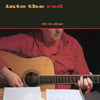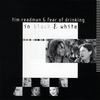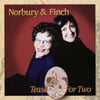Here’s some news about a learning curve that I am going through this year. The very first post I posted on this site was about getting my first bee hive, something I have always wanted to try doing, and have wanted to do more since I have learned about how important bees are to our food supply and the fate of the world in general. No mason bees for me, if I am going to care for insects, I will have honey bees.
I have been endlessly worried about my bee hive and whether it is surviving the winter or not. This is my first year of bee keeping and I made some amature mistakes that jeapordized the well being of the creatures in my care that I will not make again now that I know better.
I left a screen door on the house instead of a solid door when the storms and cold began. I fixed it a month later, but imagine if someone did that to your house? You might become more suseptible to cold and illness. If you had to live off of stored food, like my bees do, and it was in danger of going moldy because the landlord didn’t supply a door, it would not be good. If the basement flooded a little too because the house was unknowingly placed in an area that becomes swampy over the winter, it might increase your chances of illness and death as well.
I fixed that problem with the uneasy task of suiting up and moving the hive at a time of year when the bees do not want to be disturbed. My helper and I had to carry the hive carefully to avoid causing mass panic within and thus protective aggressive behaviour. It was extremely heavy and the ground was extremely slippery and muddy. But it had to be done, there was too many dead piling up outside the door, giving me the hint that things were not ok inside. I did some clean up, I swept out the entry way, now supplied with a solid wooden door, with pine sticks, and only one or two of the hives inhabitants buzzed around me. I put out fresh dry food, and one came up to eat it. But there were one or two where there were normally hundreds. So I wondered and wondered how many of the worlds most precious bugs had been killed by my previous beginner ignorance?
My helper, who is a more experianced bee keeper came around today and said we needed to open it up and look inside. This is the absolute worst time of year to do that. Today was the best day at the worst time of year to even try. So we opened the lid. We heard nothing. The new food has not been touched. There was dampness around the edges of the feeding box. Our hopes plummeted.
We took out the feeding box. There were a few dead in the deep super that appears to be still full of honey. We did not see or hear any signs of life. My helper took her hive tool and began to loosen the top box from the bottom box, where the bees have glued it shut with propolis.
Suddenly, we heard it. A promising sound. Buzzing. A stir from within.
Then, as we carefully lifted the top box, we could see the cluster of bees. It was a tightly packed cluster, a lot were in there. There was enough bees, my more experianced helper said to me, that the queen could be laying eggs and more brood hatching at the center of the cluster. It was a lot more promising that we had dared to hope for.
“She must be a really strong queen”
I felt ever so proud, ever so thankful to be the keeper of such resiliant creatures who survived and thrived dispite my lack of knowledge and mistakes made in what they need for their well being.





